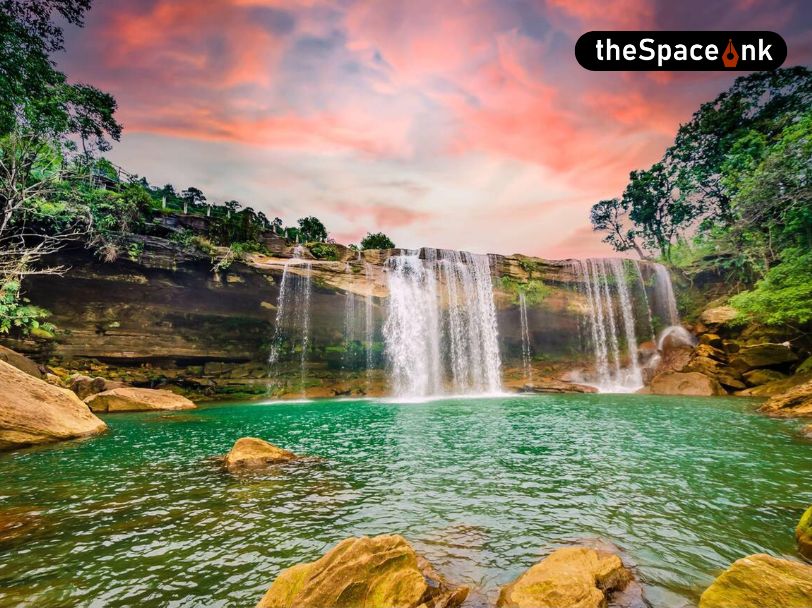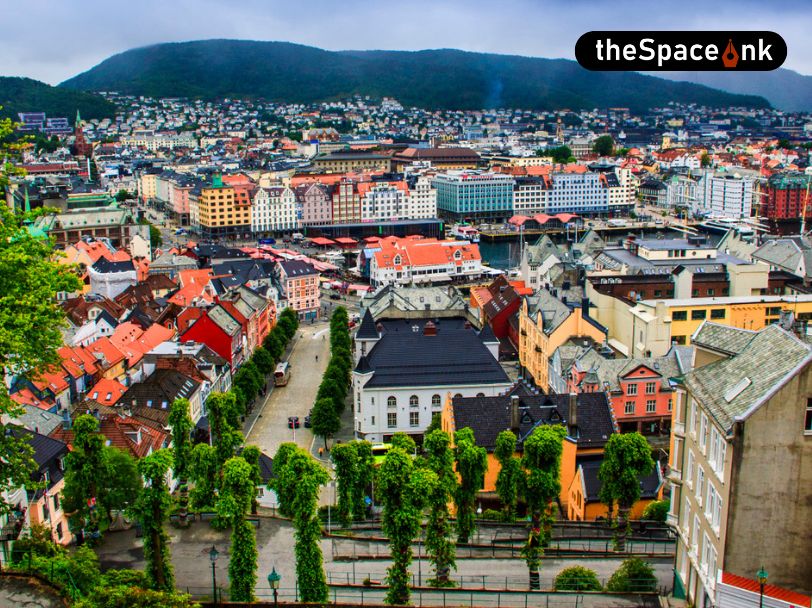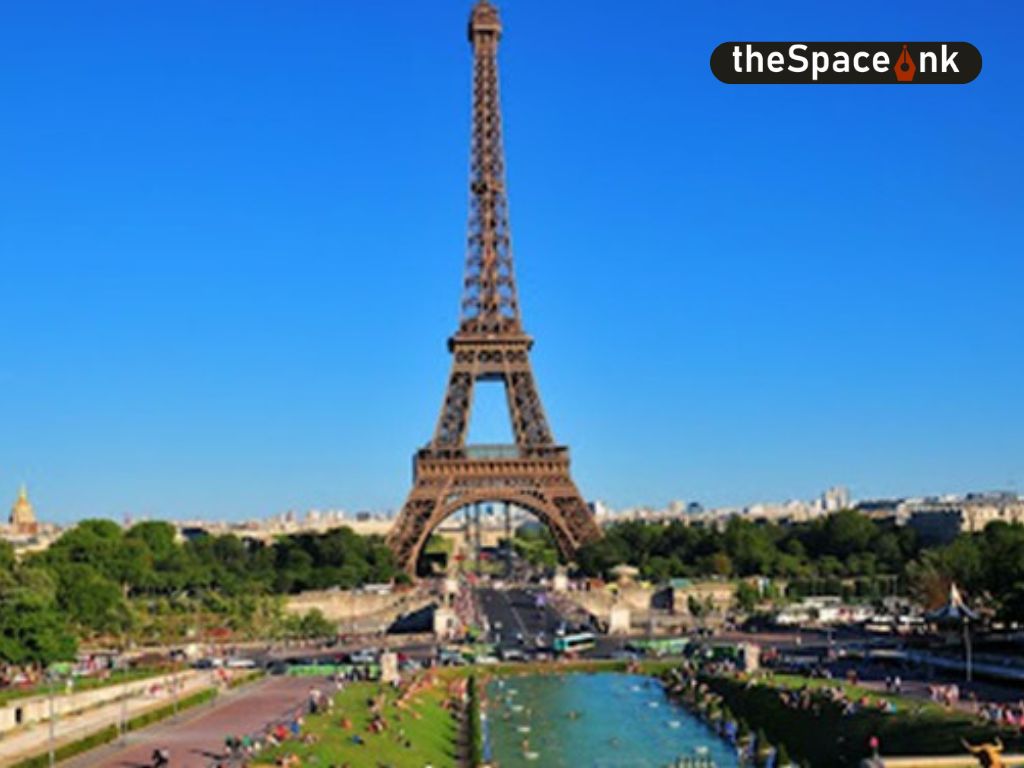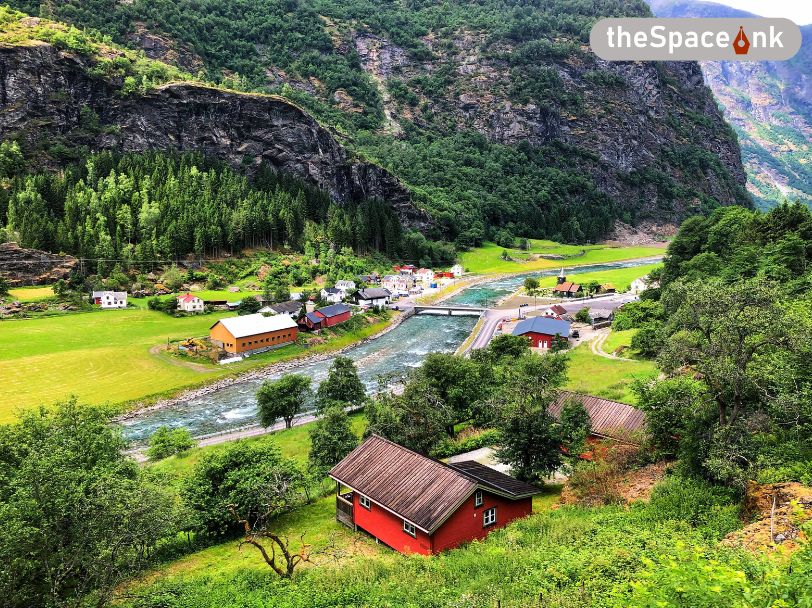A family wedding saw me doing a trip to Visakhapatnam or Vizag as I call it in February 2024. Old timers, like my dad, always referred to the city as Waltair. It was to be a short trip, but I decided to make the most of it and squeeze in a day’s trip to the village of Lambasinghi. Googling the place would result in descriptions of the place as Kashmir of Andhra Pradesh and the like. Lambasinghi is part of what was called the agency area.
Lambasinghi or as locals refer to it Lammasinghi is quite a popular tourist spot these days. There are several Instagram reels of the place, and the crowds throng the place to see the play of the mist and the clouds early in the morning.
Located at an altitude of about 1025 metres, Lambasinghi is 115 kilometres from Visakhapatnam. The drive from the city is a comfortable one and as one leaves the hustle behind and pass small villages and hamlets, one makes the gentle, small ascent.
My second cousin was my companion for this trip, someone with whom I had spent several school vacations in Hyderabad. I had never been on a trip with her, and she decided to join me as we had much catching up to do. We stopped for a coffee and decided to do a bit of sightseeing before we reached Lambasinghi. Kothapalli Falls was our first stop.
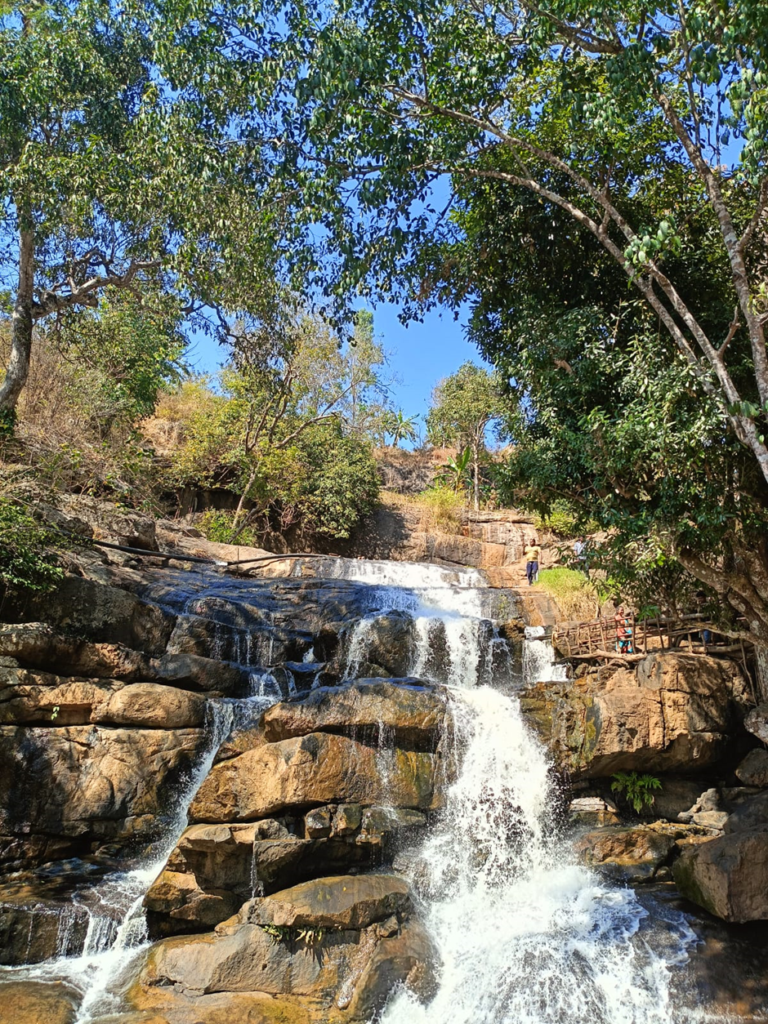
Kothapalli Waterfalls is located in the Alluri Sitarama Raju district of Andhra Pradesh. Developed pretty recently, people from several nearby towns and cities visit the place for day trips and picnics. A few small shops here and there, some steps to climb down to the waterfalls, a gate that announces the place is all that is seen. Nestled in sylvan surroundings the drive to the place and the climb down the stairs is worth the sight that one gets to see.
The waters rushing down the rocks, create patterns and there are spots that one can get close to the water and even wade inside should one choose to! Several folks enjoyed the splashing water on them, having fun and literally soaking in the place. We had no intention of getting drenched, but we did get close to the water as we wanted to be photographed with the water in the background.

We trudged back slowly and began the drive, this time to Lambasinghi. Lambasinghi is nestled in a valley and the hills around, part of the Eastern Ghats, lend a charm to the place. There are various camping sites and facilities in the village and its vicinity, but I had booked the Andhra Pradesh tourism accommodation that has both rooms and tent-like rooms that were spacious and comfortable. There were no tourists there and we were famished with all the driving and sightseeing. A simple, wholesome lunch was rustled up and served.
The tourism property is huge and there are tourists on weekends and holidays usually. The staff are mostly locals who are very friendly and warm. We checked into our room that was a comfortably large tent perched on stilts and then decided to walk around the village before the sun set. Right opposite the tent, perched on the side of the hill, were fields of strawberries. To the left lay the hamlet and the local habitation. Local buses journey from places like Visakhapatnam, Kakinada and Anakapalle to Lambasinghi.
It was February and the sun was bright and hot, making me wonder how the Kashmir comparison could at all come in! Wait till the sun sets, we were told. Rama, my cousin had been here before and she told me it cooled down considerably after sunset. She had stayed in a private tent accommodation on an earlier trip with her family, one with bonfires and the like.
We ventured into the village for a short walk and got back to our tent as the light began to lessen and the twilight redness slowly turned dark. A bonfire was lit just in front of our tent with logs bought for the purpose by the hotel folk. The temperature began to dip, and the warmth of the fire was much enjoyed. We even had our dinner by the fire. Inside the tent the temperature was about 15 degrees.

The highlight of the place was to be enjoyed early in the morning we were told. One had to start early while still dark and either take a ride or walk up to the top of the nearby hill. Vehicles could only take us to the bottom of the hill. From there it was a comfortable hike or there were shared jeeps that made the trip up.
It was dark when we started in the morning and as we made the final ascent by the jeep, there was a faint redness in the eastern sky. Atop the hill were a few viewing platforms and there were several people waiting there. That was when we realized the sheer number of tourists in the place. We were told there are a lot more during weekends and holidays.
Also Read: Fontainhas: Goa’s Hidden Gem
A few shops were slowly set up, selling tea and Maggi. The hot cuppa was badly needed. As the redness spread, one was gradually able to see the mist and the clouds in front, covering the valley like a blanket. Here and there, on the higher slopes of the surrounding hills could be seen a tree or two peeping out. As dawn broke, the sight looked ethereal. The play of clouds and mist and the conversation between them went on till the sun decided to move higher up. Slowly the mist began to clear revealing the valley.

Life limped back to normal in the hamlet on the hill and in the valley below. A woman cleaned the vicinity of her home, the cow mooed in the shed, the cock crowed, just the usual in their daily life that went on oblivious to the crowds of tourists who delighted in what to the locals were merely mundane sights. The young men who drove the jeeps up and down were mostly villagers of this and nearby villages and the tourists pouring in meant a source of income for them. As the jeeps made the journey up and down the hill, they reached out to one another.
Standing on the hillside, looking down and around us we were absolutely in awe of the beauty of the sights. We sat down for a while and then decided to walk down the hill on foot. It was bright now and the descent would surely not be much of a problem. As we climbed down and looked out into the valley, we saw a few clouds that were floating still creating patterns that lingered and then disappeared as we took a turn down the mountain bend. The road here was not good and jeeps carefully navigated the red road as they moved up and down.

Before we left the place, we had another place to make a stop and that was the strawberry fields. We checked out from our hotel and visited the fields. We are told by the manager of a field that cultivation of strawberries here was a recent phenomenon. His Telugu accent made it clear that he was not from this place. He belonged to Kakinada he informed and had taken these fields on lease. There were several others like him.
The workers who took care of the field were local and the strawberries harvested were sold in the nearby towns and in Visakhapatnam. Visiting tourists made it a point to visit them. We were given some nice juicy strawberries to taste. One is allowed walk through the field to have a feel of it all. Both green and red ripe strawberries peeped through the green that were all in line. Nearby was a field of sunflowers dancing brightly in the gentle breeze.

Several tourists visit Lambasinghi as part of their Araku trip, we were told by a family visiting the place. They themselves had come down to the place from the popular Araku Valley. It was time for us to leave the place and its soft gentle charm. As we headed back to the city, the hills and the valleys receded in the distance. The quiet hamlet of Lambasinghi and its people were left behind. The small-thatched huts, people at work, a couple of small shops, a small child playing in the courtyard, water stored in containers revealed that life in this village was a hard one, one far removed from the tourists and what they sought in Lambasinghi.

Image Courtesy: Author
Nishi Pulugurtha is academic, author, poet and translator. Her publications include: travel writing - Out in the Open, Across and Beyond; poetry - The Real and the Unreal and Other Poems, Raindrops on the Periwinkle, Looking Poems; short stories - The Window Sill and essays - Lockdown Times. Her co-edited translation work is forthcoming.





